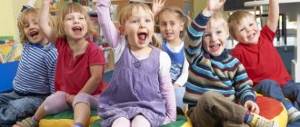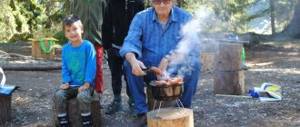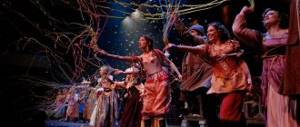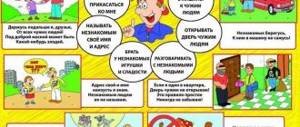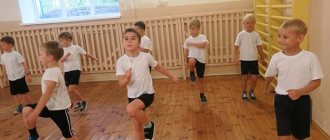Basic rules of behavior in nature
Once in nature, preschoolers try to look at everything that comes their way. Parents, happy that the kids have found something to do and have quieted down, experience temporary relaxation and loosen control. This is where danger may lie.
Safety is important on the water
Children are so inquisitive that they try to take everything that comes their way into their mouth, taste it, and bite it into pieces. Thus, you may encounter the danger of poisoning from poisonous berries and mushrooms, or become allergic to wild plants.
For your information! It is important to explain to the children that everything unfamiliar to them should be shown to their parents or accompanying adults.
When going to the forest, tell everyone that you have been invited to visit, and you must behave respectfully. The following rules must be strictly followed:
- You can't shout loudly in the forest.
- Do not touch bird nests.
- You can't break trees.
- Do not run too fast in unfamiliar terrain - there may be a tree root or stone under the grass, you can trip and get hurt.
- You should not get too close to the steep banks of the river - a lump of earth may collapse and the child will fall into the water.
- You should not destroy anthills - this will harm the insects and may cause an allergic reaction.
- The extermination of insects should not be allowed: butterflies, beetles, spiders - these may be rare species.
- It is unsafe to pick some plants and flowers, as they may be poisonous or listed in the Red Book of Nature.
- It is not recommended to approach unfamiliar animals.
- You cannot run away from adults in the forest, as you can get lost.
Conversation “How to behave in nature”
Conversation on the topic “How to behave in nature”
Author: Irina Evgenievna Grigorieva, additional education teacher
MBU DO "Station of Young People" in the city of Vyazma, Smolensk region.
Purpose of the conversation
: consolidate knowledge about the rules of behavior in nature.
Equipment:
cards depicting situations in nature.
Progress of the conversation:
Guys, I would like to start our conversation with these words: “Nature is the common home of plants, animals and humans, and we need to think about how this house will always prosper and grow rich.” We often go to visit nature to admire its beauty, enjoy the fresh, fragrant air, hear birds singing, and pick wild berries, mushrooms, and nuts in a basket. But we must not forget that we are guests. We are in someone else's house, which has many of its own residents and rules. What are these rules?
The teacher reads a story on this topic.
Sunday trip to the forest
At the end of the school year in mid-May, the fourth graders decided to go to the forest. Early on Sunday morning they gathered at the bus stop along with Ivanov Kolya’s parents. We boarded the bus, bought tickets and headed off into nature with the breeze. They arrived in a good mood at the outskirts of the forest. And here the question arose before them, in which direction to move next. Maybe in that corner over there, behind which the white trunks of birch trees can be seen. It must be bright and cozy there! The decision is made, and the whole company quickly walks straight through forest grasses and low forest shrubs to the chosen place.
Did the fourth graders do it right? What did the children do wrong? What is their mistake?
Listen to one expression that may tell you the mistake you made. “One person leaves a trail in the forest, a hundred people leave a path, and a thousand people leave a desert.”
Now I hope it’s clear to you what mistake the guests made? The soil layer in the forest is very thin and can easily be damaged and compacted. And at the same time, damage the roots of trees and shrubs, which suffer greatly from such invasions.
What important rule of behavior in nature can be formulated based on the example discussed?
1.Do not trample forest clearings and corners in vain, move along the paths!
The place really turned out to be wonderful. Many forest flowers grew among the white-trunked birches. They were very beautiful, you just couldn’t take your eyes off them. And the guys decided to pick bouquets for their loved ones. While collecting flowers, they noisily told each other how happy their parents would be at such a beautiful gift.
(Questions are repeated). Did the fourth graders do it right? What did the children do wrong? What is their mistake?
There are fewer and fewer beautiful flowers left in our meadows and forests due to thoughtless picking: picked flowers quickly wither and die. Many of them have become rare and are listed in the Red Book. Therefore, try to admire them in nature rather than tear them and then throw them away in armfuls on the way home.
What important rule of behavior in nature can be formulated based on the example discussed?
2. Do not pick forest and wildflowers in huge armfuls!
Satisfied with the collected bouquets, the children cheered up and began to sing songs loudly. They decided to arrange a competition between teams to see who could sing the song loudest. At the same time, they did not forget about the tape recorder. The music thundered throughout the forest. Dasha decided to praise everyone: “What a great fellow we are! We organized a real holiday in the forest!”
(Questions are repeated). Did the fourth graders do it right? What did the children do wrong? What is their mistake?
Noise, loud music, screams in the forest scare birds, animals, and insects. Cubs can lose their parents and die without them.
If you want to see a lot of interesting things in nature and hear the singing of birds, the buzzing of insects, the squeaking of a wood mouse - hide and don’t make noise, listen to the rustles and sounds. You are visiting nature, remember this!
The following rule of conduct:
3. Don't make noise in nature! Move around and relax without noise!
After the fun concert, everyone decided to wander around the forest, look around, and watch the animals. And then tell us what interesting things you saw. This is what the girls later talked about. Not far behind the bushes they found a hedgehog. He got scared and curled up into a ball. The children thought that the baby was lost, so they needed to take him with them to the city. There he will get used to them and become tame.
(Questions are repeated). Did the fourth graders do it right? What did the children do wrong? What is their mistake?
In spring and early summer there are a lot of young animals in the forest: small fluffy squirrels, gray toy hares, small hedgehogs. All these animals are at home in the forest. So when you decide to take them, you are essentially stealing them. You steal them from your home. You know nothing about their habits, about the lifestyle they lead, about their food. You usually feed animals at home with food that is not the same as what they eat in the wild, and then you wonder why these animals, despite your care, suddenly die. It is enough to admire the animals in nature and bring with you a lot of impressions of meeting them that will not be forgotten for a long time!
The following rule of conduct:
4. Don’t take animals home from the forest!
The exception is injured animals that need assistance.
And on the way of the boys a huge anthill grew. Ants were scurrying around their house. They dragged needles, blades of grass, caterpillars, and insects into the anthill. Vova said: “Ants produce acid. Would you like to taste it? There were a lot of people interested. The boys broke branches from the bush and began to pierce the anthill with them. And then they licked the sour twigs with pleasure.
(Questions are repeated). Did the fourth graders do it right? What did the children do wrong? What is their mistake?
Ants play an important role in the life of nature. They destroy a huge number of forest pests. They need to be protected and protected in every possible way. After all, there are fewer and fewer anthills in the forests. Ants die from logging, they are ruined by irresponsible people who are ready to look at how these little insects scurry around. Healers catch ants to prepare formic alcohol. Anthills and forest animals are destroyed: bears, wild boars.
The following rule of conduct:
5. Never destroy anthills! Don't bother the ants in vain!
It's time for lunch. We decided to set up a bivouac under a large tree. The boys began collecting brushwood to make a fire. They didn’t forget about the spruce branches; they picked them to make it soft and comfortable to sit on. The girls began to lay out food supplies in the forest clearing. They unwrapped the sandwiches and threw paper into the pile. Empty cans and bottles were also sent there. Soon a bright fire began to blaze. The children enjoyed frying sausages and bread over the fire. And then they ate it all with gusto.
It's time to go home. The fire was put out. The children quickly got ready and headed towards the bus stop.
(Questions are repeated). Did the fourth graders do it right? What did the children do wrong? What is their mistake?
Look what's left after a vacation in nature. The area burned out from the fire gapes like a black clearing. The fire burned the roots and branches of a nearby tree. Nearby is a mountain of dried spruce branches. There are pieces of paper, tin cans, and pieces of bread lying on the grass. The grass all around was trampled, branches of nearby trees and bushes were broken.
The following rule of conduct:
6. Know how to organize your vacation so as not to harm nature!
Guys, what other rules of behavior in nature do you know?
7.When picking mushrooms, carefully cut them with a knife!
You cannot pull out or twist the mushrooms, so as not to damage the mycelium.
You should not knock down mushrooms that are unfamiliar to you; they can be useful to animals: squirrels, moose, deer, wild boars.
8.When picking berries, pick only ripe berries!
Many people rush to collect unripe pale pink lingonberries and cranberries, for which some pickers use scoops and scrapers that collect not only the berries, but sometimes the entire plant. Collect bouquets of strawberries and blueberries. The branches wither very quickly, but in nature new ones will not grow soon, only after several decades.
So we have discussed several commandments of behavior in nature. Of course, this is only a small part of the rules of behavior in the natural environment. But these rules will also help preserve natural diversity.
The reason for many negative actions in nature is ignorance. Therefore, your first task is to study the life of nature; find out why in nature it is necessary to act this way and not otherwise; try to follow the necessary instructions and prohibitions during rest, picking mushrooms and berries.
Rules of conduct on the water
The most favorite pastime for children is definitely swimming in a river, lake or pond. Every child wants to swim, dive, splash, even play tag on the water.
Swimming in the river should be done with caution
Rules of conduct on water for children are especially important, since bodies of water are, first of all, of great interest to children, and secondly, of serious danger. It is necessary to consider several rules that a preschooler must learn.
Rules for safe behavior in spring for children
How to behave safely at sea
Sun, air and water are best friends. And the sea offers a lot of impressions and emotions. Most often, it takes some time to get to the sea by transport. This tires the child's body. Rules of behavior on the water for children in the form of a reminder:
- Allow the child to adapt to new conditions, everyone has a different period of adaptation to the climate and the sea, start swimming with a few minutes, gradually increasing the time spent in the water.
- Let your baby swim in a T-shirt for the first time to avoid the danger of getting sunburned.
- You cannot force a preschooler to swim in the sea; he must want it himself.
- To enjoy sea bathing, you need to change wet clothes for dry ones as quickly as possible.
- Drink more often on the beach, as dehydration occurs.
- Use sunscreen with the required level of protection.
- Avoid peak sun activity.
- Wear a headdress.
- During bathing, make sure that the baby does not swallow water.
- Teaching a child to swim is an important task.
What water safety signs look like
In preschool institutions, educators carry out explanatory work on the safety of children on the water. These include conversations and lectures; it could be a presentation where water safety signs will be placed on the slides. Of course, not everyone at this age can read, but they are all able to remember the designation of these signs and their meaning.
For your information! The most important sign is the one framed in green. It depicts a man swimming. This is how swimming places are designated.
The same green frame depicts two kids standing in the water. This sign identifies swimming areas.
An identical frame depicts a swimming dog. This is a place for animals to bathe.
Signs you need to know
A swimming man is depicted in a red frame against a background of blue water. The frame is crossed out diagonally in red. Swimming is prohibited here.
These are the basic water safety signs that a preschool child should know.
How to behave correctly in a critical situation
The child needs to understand and clearly know that when he sees a person who needs help, he must inform adults about it.
For your information! If suddenly the baby swallows water, becomes hypothermic, or has a cramp in his leg, he should call an adult for help.
What to do if your child constantly lies and deceives
Rules of conduct on the river
Swimming is a favorite activity for children, but cool river water can be dangerous. It is important to know the rules, which in Russia have not changed much since the 19th century. Rules of behavior for children on the water:
- You should not dive in unfamiliar places.
- Do not swim beyond the buoys under any circumstances, even on an inflatable mattress.
- Do not play dangerous games with capture.
- In winter and spring, do not go on the ice.
- If you don’t know how to swim, use armbands or an inflatable ring.
- You cannot drink water from the pond.
Tips for parents
By directly coming into contact with nature and its fragile beauty, children become more aware of how important it is to protect this amazing environment and learn to be conscientious owners of our wonderful planet. You can look at a thin cobweb, admire the iridescent wings of dragonflies, and taste fragrant wild strawberries.
Adults, however, should not relax when they see that the kids are engaged in an exciting activity. The excitement of freedom and variety can cause injury. Therefore, it is very important before going out of town to remind children of the rules of behavior in nature, to explain what is allowed and prohibited.
6 main dos and don'ts
| Can be done with adults | Can't do |
| Approach bodies of water | Run away from adults |
| Play in the water | Go far into the forest |
| Approach an open fire | Throw garbage |
| Collect bouquets | Aimlessly pick flowers and grass |
| Collect berries and nuts | Try raw mushrooms, unfamiliar fruits |
| Look at anthills | Pick up fauna representatives |
It is useful to explain to children that all living beings have the right to live and grow. Therefore, you cannot kill insects, spoil berry bushes and mushrooms, even poisonous ones. Every plant and animal is an important part of the ecosystem; deprivation of one representative of flora or fauna can negatively affect nature.
When in the forest with a child, take care of his safety:
- the baby should not be in the sun for too long;
- clothes should be as bright as possible so that the child can be clearly seen.
Pack and take a small first aid kit with you, because a young city dweller who is not accustomed to insects and plants may get hurt or react too sensitively to pollen.
A portable first aid kit should contain:
- hydrogen peroxide;
- brilliant green or iodine;
- Activated carbon;
- burn remedy;
- antihistamine;
- repellent and remedy for mosquito and bumblebee bites;
- antibacterial wet wipes.
After finishing an amazing forest adventure, remind your child that all garbage must be collected and taken with them, and the fire must be extinguished to prevent a forest fire.
It is necessary to follow simple rules of behavior in nature; for children, following them will be a guarantor of safety, will help them learn a caring attitude towards living beings, vision and understanding of beauty, and will instill in children a love for their native land.
Rules of behavior in the forest
The forest attracts parents with children for a picnic and poses some danger to the child’s life. Life is not only a gift, but also a great responsibility. Summer is the best time to visit the forest. Fire safety in the forest for children can be presented in the form of clipart.
Fire safety in the forest
Children are interested in working with drawings, and they happily get involved in the work and remember the material.
The forest is a fire hazard
Rules:
- Fire is one of the biggest dangers in the forest, so young children should not make a fire without an adult.
- You can't play with fire.
- If a fire does happen, it is important to run away from the forest in the direction from which the wind is blowing.
- Be sure to inform an adult about the fire.
For your information! Parents should surround the child with care and attention so as not to leave them alone, and children would not want to play with fire. Safety in the forest for children depends entirely on the behavior of adults.
Personal safety in the forest
In order to somehow tell the child about the child’s personal safety in the forest, coloring books are suitable as a visual material. It contains pictures by which the child must remember the rules of personal safety in the forest. Children's intelligence will allow them to cope with interesting coloring tasks and learn the etiquette of a preschooler's behavior in the forest. The material is arranged as a reminder of behavior in the forest. An interesting activity such as coloring can save a child’s life in a difficult situation.
Whatever activity parents and kindergarten teachers choose to work with children on the safety of the lives of preschoolers, everything will definitely be beneficial. Upon entering 1st grade, the student will already know a lot about safe behavior. Children easily remember everything important and will be able to apply it in life.
Basic safety rules in nature
Children's favorite way to get to know the world around them is to put everything they can get their hands on into their mouths. Therefore, wildlife objects can cause danger. It is worth explaining to the little ones that they cannot try the berries they encounter without showing them to adults. The same applies to other gifts of nature.
Older children should be taught how to move around the forest correctly: you shouldn’t rush around headlong, because if you trip over a random stone or root you can be seriously injured.
